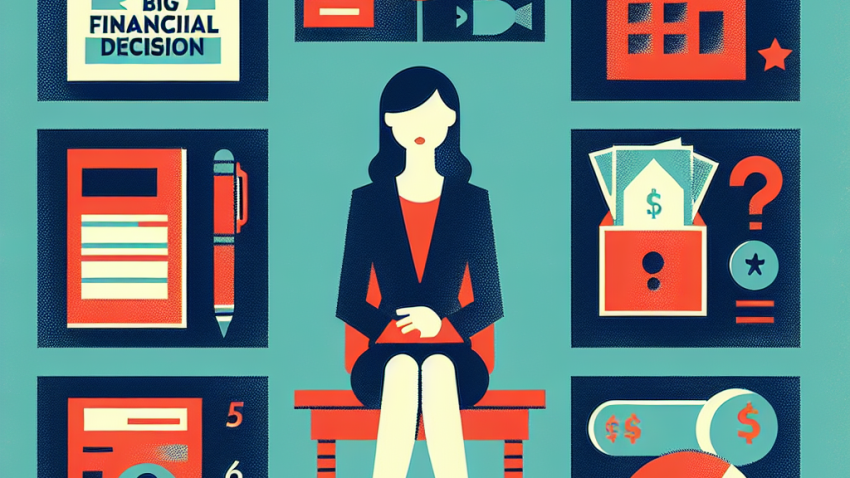
5 Questions I Ask Before Every Big Financial Decision
How to Build a Solid Emergency Fund Without Killing Your Lifestyle
Let’s face it: emergency funds aren’t exactly sexy. They’re not glamorous, they don’t offer juicy returns, and you definitely can’t humble-brag about them at brunch. “Guess how much I saved this month for a possible car breakdown?” doesn’t quite have the same pizzazz as “I just bought Tesla stock.” But here’s the truth, friend — nothing screams financial independence louder than a fully stocked emergency fund.
Hi there, I’m Rachel Simmons – and if you’re new to my world, welcome! I’m obsessed with helping regular, ambitious humans (like you) master the art of personal finance without sacrificing joy. Yes, even if your idea of budgeting is limiting yourself to one oat milk latte a day instead of two.
In this guide, we’re diving headfirst into emergency funds: what they are, why they matter, and most importantly, how to build one without sucking the life out of your lifestyle. Grab your favorite beverage and let’s future-proof your financial independence journey.
What Is an Emergency Fund (And Why You 1000% Need One)
An emergency fund is like your financial seatbelt. You hope you never need it, but when an unexpected “life bump” comes your way, you’ll be beyond grateful it’s there. Whether it’s job loss, medical bills, surprise vet visits, or your car deciding it doesn’t want to be a car anymore — your emergency fund is there to catch you.
So how much should you have saved?
The golden rule: aim for at least 3 to 6 months’ worth of expenses. More if you’re self-employed or your income is unpredictable.
Think of it in tiers:
- Starter fund: $1,000 – quick buffer for minor emergencies.
- Basic fund: 3 months of essentials (rent, food, bills, etc.).
- Full fund: 6 months or more, especially if you’re aiming for full financial independence.
I know, I know — it sounds daunting. But breathe. You don’t have to build it overnight.
Step-by-Step: Building an Emergency Fund Without Killing Your Vibe
Here’s how to build your fund without living like a miser or giving up your avocado toast fix. Because yes, you can be financially healthy and enjoy your life, too.
1. Know Your Number
First, calculate your monthly “bare minimum” expenses — housing, food, transportation, insurance, debt payments. Multiply that by 3 or 6 to find your goal number. Let’s call this your EF Magic Number.
Here’s a quick example:
- Rent: $1,200
- Groceries: $300
- Utilities & bills: $200
- Transportation: $150
- Insurance: $150
Total: $2,000/month → Emergency fund goal = $6,000 (for 3 months) or $12,000 (for 6 months).
2. Open a Separate High-Yield Savings Account
Do NOT — I repeat, do NOT — keep this money in your regular checking account. That’s asking for “oops I spent my emergency fund on concert tickets” energy.
Instead, open a high-yield savings account that’s separate, hard to touch, and earns you a bit of interest. Look for ones offering 3% APY or higher. And yes — no-fee accounts only.
3. Automate Like a Boss
Automation is your best friend. Set up an auto-transfer from your checking into your emergency fund every payday. Even $25 a week adds up over time. The goal is to make saving brainless and frictionless.
Some fun benchmarks:
- $25/week = $1,300 in a year
- $50/week = $2,600 in a year
- $100/week = $5,200 in a year
That’s a whole starter fund with room to spare, and you won’t even feel it after a few weeks.
4. Use Windfalls Wisely
Got a tax refund, a birthday check from grandma, or a random bonus? High five! Now put a portion of it directly into your fund. You can still enjoy part of the windfall, but aim for the sacred 70/30 split: 70% save, 30% play.
5. Cut the Fat, Not the Fun
Let’s get real — you probably don’t need to give up everything joyful to save more. Instead of a complete lifestyle overhaul, do a lifestyle audit. Cut what doesn’t thrill you:
- Do you love every one of your five streaming subscriptions? Trim them.
- Ordering takeout multiple times per week? Try a meal prep night once a week.
- Forgotten subscriptions? Goodbye, $10 meditation app you haven’t used in six months.
Redirect those little “leaks” straight into your e-fund. Boom — painless savings.
6. Celebrate Milestones
This isn’t punishment — it’s progress. Every $500 you save is a big deal. Treat yourself to a no-spend celebration day, a DIY face mask night, or even a cheeky Instagram brag (tag me, I’ll root for you!).
Emergency Fund Rules to Live By
Once your fund starts growing, protect it like your houseplants during a heatwave. A few golden guidelines:
- Only use it for true emergencies. New iPhone? Not an emergency. Root canal? Sadly, yes.
- Refill after withdrawal. Had to dip into it? Make a plan to replenish ASAP.
- Don’t overfund it. Once you hit your goal, reroute extra savings to investments or other goals.
The Big Picture: Why This Matters
Building an emergency fund isn’t just a finance flex — it’s a core pillar of financial independence. It gives you peace of mind, options, and protection against the “what ifs” of life. And not to be dramatic, but it’s kind of the ultimate act of self-care.
This reserve gives you choices: the choice to leave a toxic job, the choice to cover a surprise without panic, the choice to sleep better at night. And you, my friend, deserve all of that.
As always — progress, not perfection. Start small, stay consistent, and give yourself grace along the way. Your emergency fund journey doesn’t have to be all sacrifice and no salsa dancing. Let’s make saving money feel good again.
You’ve Got This — One Deposit at a Time
If no one told you today: you’re doing a great job. Financial freedom is built on small habits that stack up, and choosing to start an emergency fund puts you ahead of the crowd. Keep going, keep saving, and keep believing that your future self will thank you (possibly with ugly tears and confetti).
Need more fire-in-your-belly financial tips with plenty of human? Explore other articles in our Personal Investing & Financial Independence section, or contact us if you’ve got questions or just want to say hi.
To your freedom,
Rachel

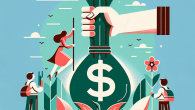
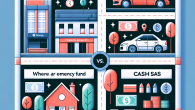

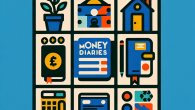

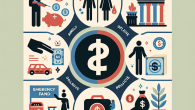


Leave a Reply